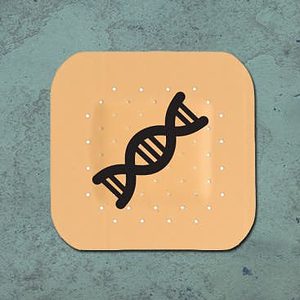Vaccines have become synonymous to needles, and for a lot of people they’re the subject of horror stories since childhood. Typically, a vaccine works by injecting an inactive virus into the body, such that when the real virus reaches the host body, the immune system will be quick to act and destroy it before it gets a chance to spread. This doesn’t always work, however, and can prove to be risky in the case of some diseases. For some years now, scientists have been researching DNA as an alternative to vaccines, and recent advancements seem to indicate that the world of the future might renounce its needles in favor of a safer and better method.
For some 20 years now, scientists working closely with DNA coding for viral proteins have found that these induce strong immune responses in rodents. When tested on human, however, results were far from being considered promising. A novel delivering technique from MIT scientists that relies on a type of vaccine delivery film holds great prospects for improving the effectiveness of DNA vaccines. Results on rodents and primates so far have been fantastic, and if the method can be deemed transmissible to humans than the DNA vaccine might overcome not only the safety risks associated with vaccines for certain types of infections and diseases, like HIV, but also those associated with stability. A DNA vaccine can be easily and safely stored and shipped at room temperature – a very important feature especially in impoverished areas.
Actually the MIT vaccine, described in a paper in the journal Nature Materials, isn’t a vaccine in the first place, not in the traditional view of it at least. Instead of injecting its payload through a syringe, “you just apply the patch for a few minutes, take it off and it leaves behind these thin polymer films embedded in the skin,” according to Darrell Irvine, an MIT professor of biological engineering and materials science and engineering.
DNA vaccines

Previous methods of inserting DNA relied on a technique called electroporation. Basically, DNA is first injected under the skin, then electrodes are attached to the area where an electric field is created. This makes the small pores of the skin membrane cells to open up a tad, just enough to allow the DNA inside. Injection? Electric shocks? You can imagine this method didn’t caught on with the public too much, besides results vary too much for it to be deemed effective and the logistics required to perform the operation are too complex for some developing regions of the world.
The patch Irvine and colleagues developed is made out of many layers of polymer embedded with the required DNA vaccine. This patch is implanted under the skin using microneedles (I know I said there weren’t any needles anymore, but common, right?) that penetrate about half a millimiter into the skin – just enough for the DNA to reach the immune cell, but not enough to cause pain. Once in position, it slowly, but surely releases the vaccine upon coming in contact with water. As the film breaks apart, the DNA strands become tangled up with pieces of the polymer, which protect the DNA and help it get inside cells. All the materials are biodegradable.
“It’s an interesting approach that can be applied not just to delivery of DNA-based vaccine antigens, but other small molecules,” says Michele Kutzler, an assistant professor at Drexel University College of Medicine, who was not part of the research team.
One of the key points of the new DNA patch vaccine is that it also contains an adjuvant molecule (could be strands of RNA that resemble viral RNA) that cause inflammation in the area, alerting swarms of immune cells, thus improving immune response.
Any kind of disease can fought against with coded DNA
Tests with mice proved to be on par or better than that achieved with electroporation. To test if these polymer DNA vaccine solicits a response for primates, the scientists engineered DNA that codes for proteins from the simian form of HIV to macaque skin samples cultured in the lab. In skin treated with the film, DNA was easily detectable, while DNA injected alone was quickly broken down.
“The hope is that that’s an indication that this will translate to large animals and hopefully humans,” Irvine says.
More tests on non-primate animals will continue in order to gather data, but if found promising and transmittable to humans, the DNA vaccine might prove to be a huge breakthrough for medicine. A DNA vaccine could be made to tackle just about any kind of disease, and as antibiotics become ever difficult to manufacture due to drug resistant viruses and diseases, this might prove to be the ultimate weapon.
“If you’re making a protein vaccine, every protein has its little quirks, and there are manufacturing issues that have to be solved to scale it up to humans. If you had a DNA platform, the DNA is going to behave the same no matter what antigen it’s encoding,” Irvine says.






